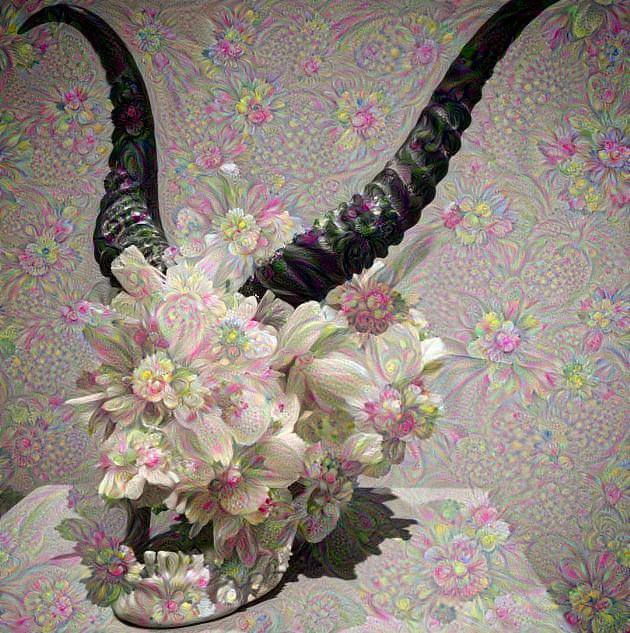I wrote this book for me. I decided to publish it for those wading through the “solitary but [would like to be] connected” current that has rose to relevance lately. My personal style of magic is Chromatic, Dynamic, and Self-Created. I accept the existence of external world, but have no way to make the bold claim that the world I create and dream about has any bearing on that world. When I cross the street, my chemical theatre (the brain) projects imagines of cars driving swiftly down the road. As I know the drivers of these vehicles may not feature me prominently or at all in their own representations, I find it very possible that the car that exists in my head can also exist in a way that utterly wrecks my body. But where mere mentalism makes a bunch of handwringing arguments for the primacy of subjective experience, I mostly proceed on probability. My world view mostly works, but then it breaks, and I have to fix it. So if anything, the paradigm I have on offer in this book also has a Bayesian characteristic.
I feel that orders, especially the ones derived from masonry, have become heavily irrelevant and mainly serve as ways for people to buy access to magic without any promise of ever doing such. This book has no rank system but the reader has every right to claim superfluous titles or don silly hats as confidence warrants. Upon reading the book there lies in wait only some more books to buy. The deepest secret of magic has always been that the world we find ourselves stuck inside has nothing more to it. This comes with a duality of both despair and deep freedom. Nothing makes worthwhile the suffering life guarantees will come our way. Conversely, nothing stops us from making the best of this absurd absence of deep, justifying meaningfulness. In realizing that this world has nothing more to it, we have free reigns to do whatever we please with it. Indulge accordingly, responsibly, and discretely.
This book comprises no solid theme and runs all over the place. Though I have a fondness for rejecting jargon, I have reserved the right to scorn pre-existing/more calcified terms and use my own where appropriate. If the reader encounters a word they do not know, don’t bother looking it up in the dictionary. Instead, just roll with it.
My magic rejects the white-black/good-evil/light-dark dichotomy for reasons that are not worth going into here save for the bald fact that I find them boring and serve mostly to goad one’s ego. The NOX/LVX dogma once offered a good buffer from this kind of morality-tinged duality, but fell short in a kind of implied exclusivity.

In its stead, my paradigm operates on a Magenta-Cyan bipolarity. One can practice both or neither colour. Practicing both goes by the term Vapour — which as it sounds, implies a commitment to something one experiences but does not exist as a first-order thing in the world. Alternatively, one may practice neither neither as they see fit. If one feels compelled to do neither, then the operating binary opposition shall instead consist of NULL & VOID. This is just vapour but for edgelords. In a roundabout way, the absence of anything serves as its own binary opposition.
Magenta has the special characteristic of being the only colour in the English language named after a battle. As the etymology betrays, Magenta has a tactical and invasive characteristic. With magenta, one paints phenomenologically, cleaving a divide between the chemical theatre and the world outside.
Cyan comes from Greek and was chosen as it is a colour not named in many languages — it is a colour roughly between Green and Blue (“Grue”). Cyan takes a structural, basal role — one lays down the blueprints, copies the imaginary into the real, and serves a protective role. With Cyan, one creates robust ontologies and structures.
In NULL & VOID one works towards erasure. In accordance with that, nothing more needs saying.
Consider the classical binary in traditional magic — white magic heals, black magic hexes. From the magenta posture, one can certainly heal — a cancer patient has their struggle ended by the plug being pulled. And the cyan operator can hex someone to live forever in total ennui, suffering under the weight of frustrating, unending self-induced torment. The rest of the book can be approached from any of the combinations of Magenta, Cyan, Vapour, and NULL & VOID that I have laid out.
The villains of this system are the basilisks, the imaginary future event that haunts the present. It comes in nightmare-ish instantiations of non-existent things that may or may never come into existence that will lay severe reckonings upon those who either failed to make their existence happen sooner, or actively opposed it. These monsters dwell in the horizons of a future we have no connection to beyond dreading their impending reality. All that amounts to little more than this — our unfulfilled ambitions, our dying dreams — pose a greater existential threat than anything else.
But aside from that, this is a rather pleasant, if not wholly pointless book.
